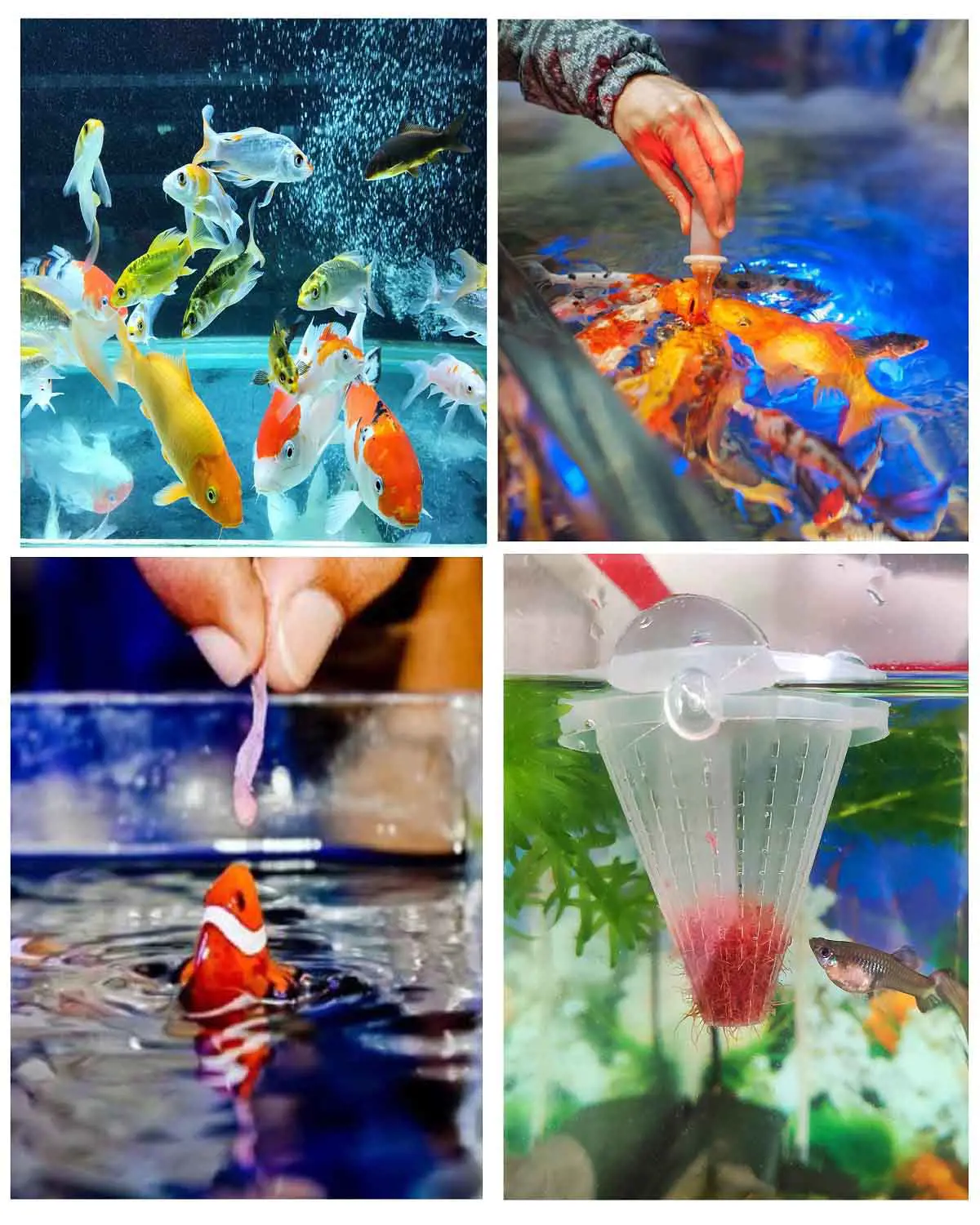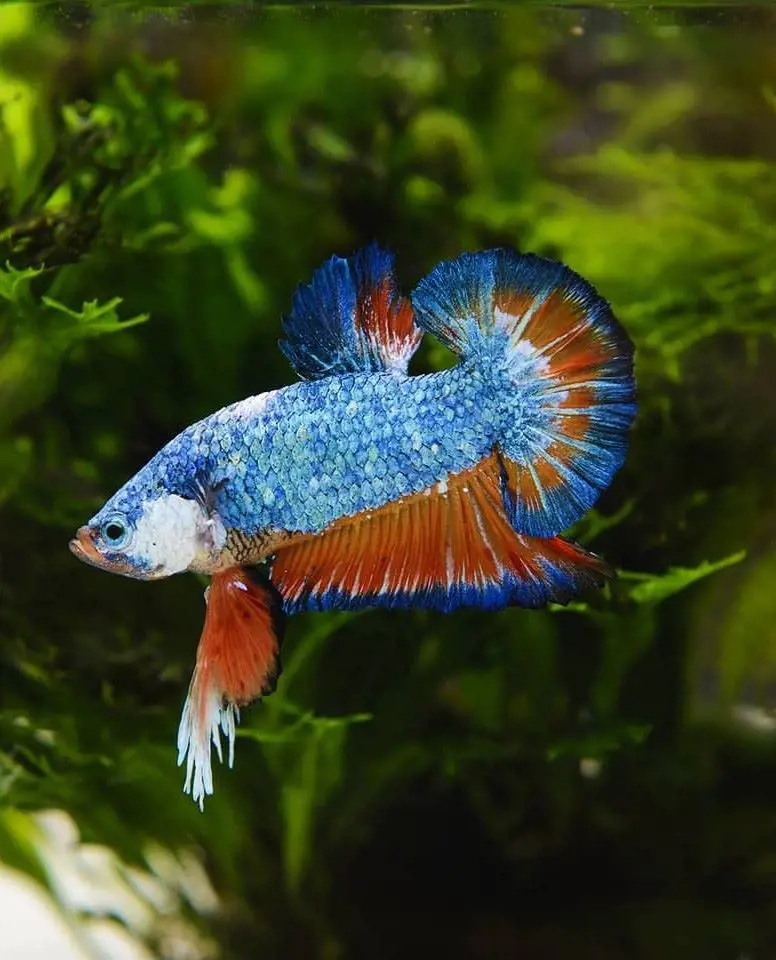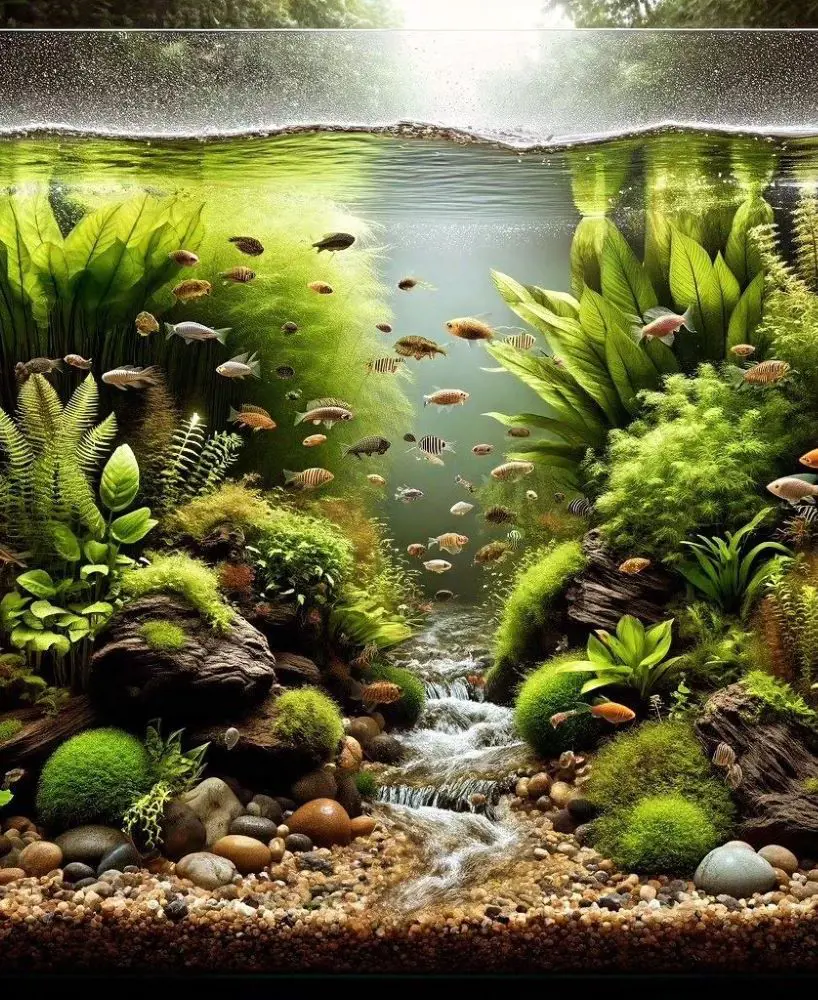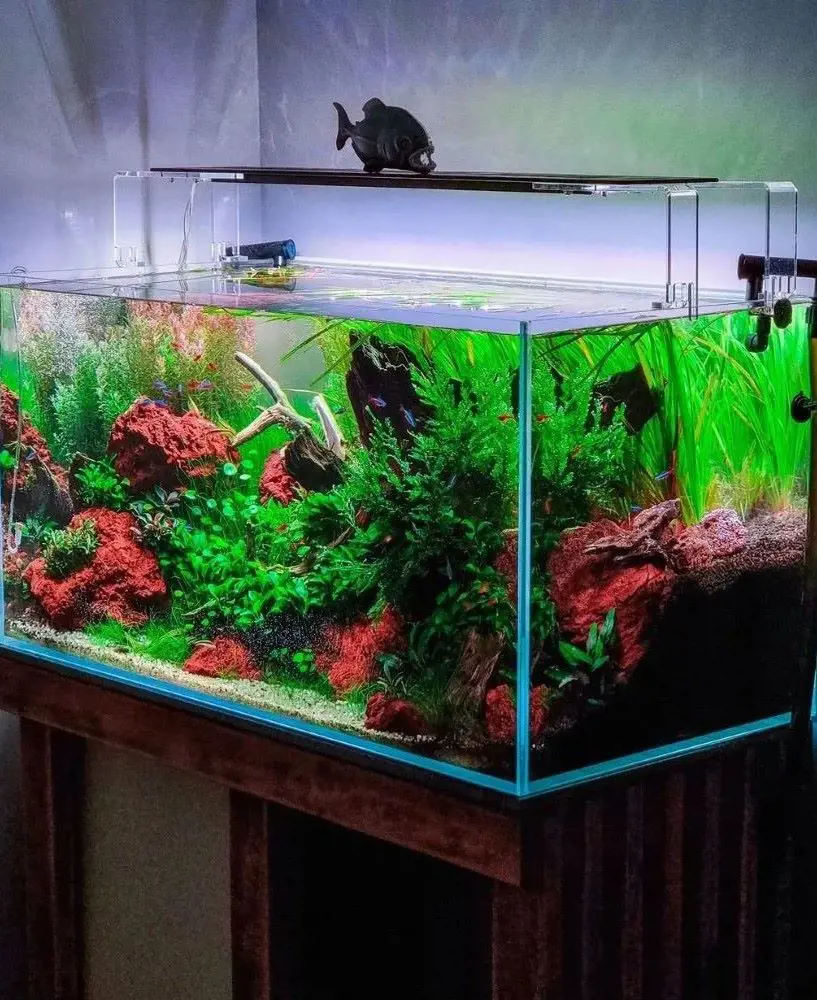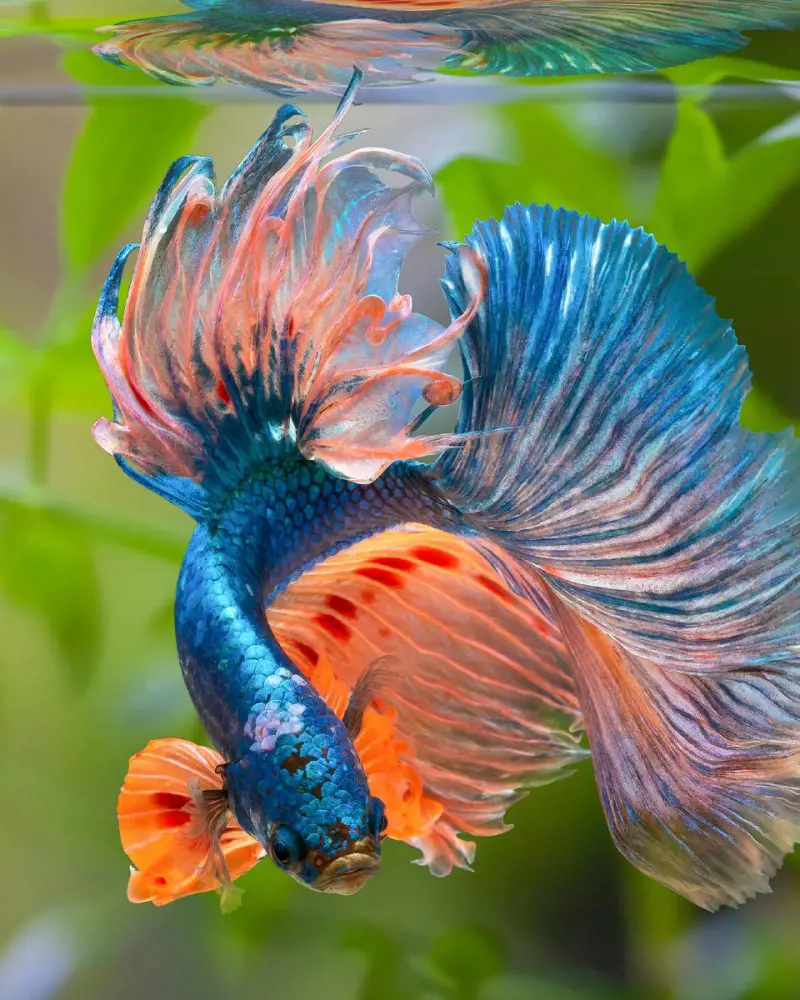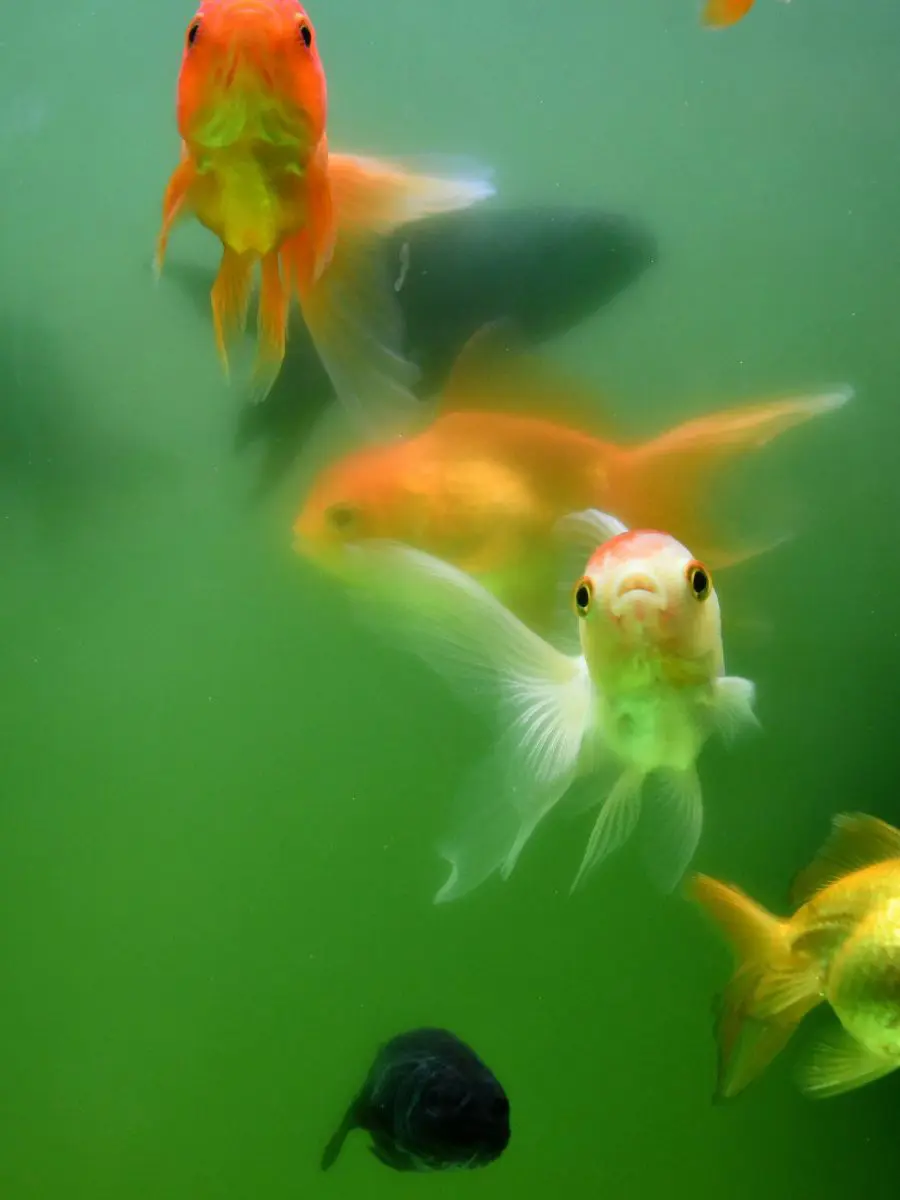Blue Crayfish Care Guide And Tank Mates
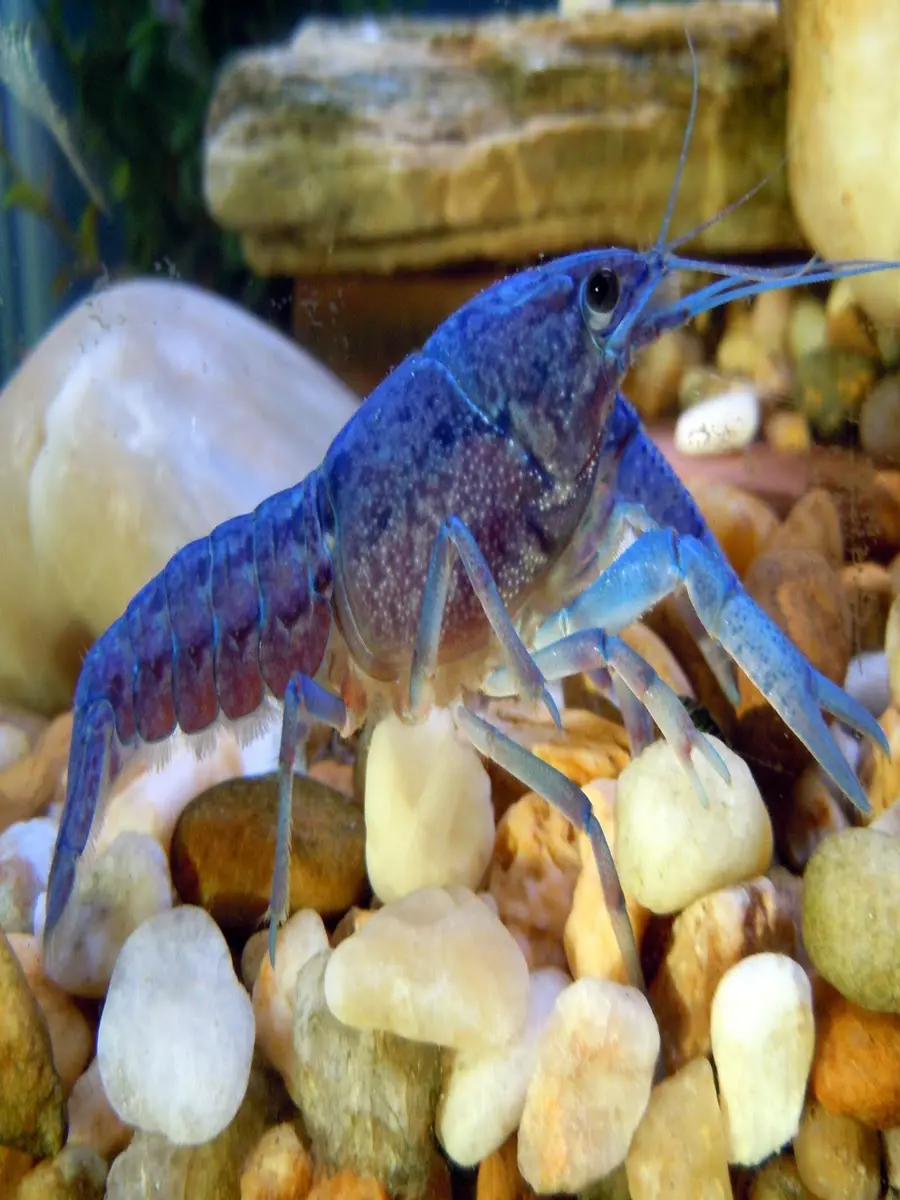
Blue Crayfish is a diverse freshwater clam prestigious for its vibrant blue shade. Their vivid pigment is due to pigments in the shield and is particularly prominent during the crayfish’s molting procedure.
Their exoskeleton also features complex markings and subtle shades, which add to its sight appeal. Blue crayfish were initially found in the seawater domain with gradual or still water. They prefer surrounding with ample hiding places, such as rocks, logs, and aquatic vegetation, which provide shelter from vultures and a suitable environment for hunting. These crayfish are antisocial by nature, often marking and defending their region from other crayfish.
Origin And Distribution Of Blue Crayfish
Blue Crayfish is indigenous to Australia, a country with a rich diversity of crayfish breeds. It is believed to have evolved in the diverse marine surroundings of this region, adjusting to a range of freshwater domains from rivers and streams to lakes and wetlands.
In its native regions, including Queensland and New South Wales, the Blue Crayfish prosper in seawater systems with abundant vegetation and hiding places. Its existence in these environments is a result of millions of years of evolutionary processes, which have shaped its physical and behavioral traits to suit the local conditions.
They are commonly found in areas with stable water conditions and can permit a range of humidity typical of their native domain. Due to its prominent looks, the Blue Crayfish has been introduced to other regions for beekeeping and as a pet variety. It is important to note that such introductions can pose risks to local mankind if not managed properly, as the crayfish could potentially become an infectious category in foreign environments.
Characteristics And Typical Behavior Of Blue Crayfish
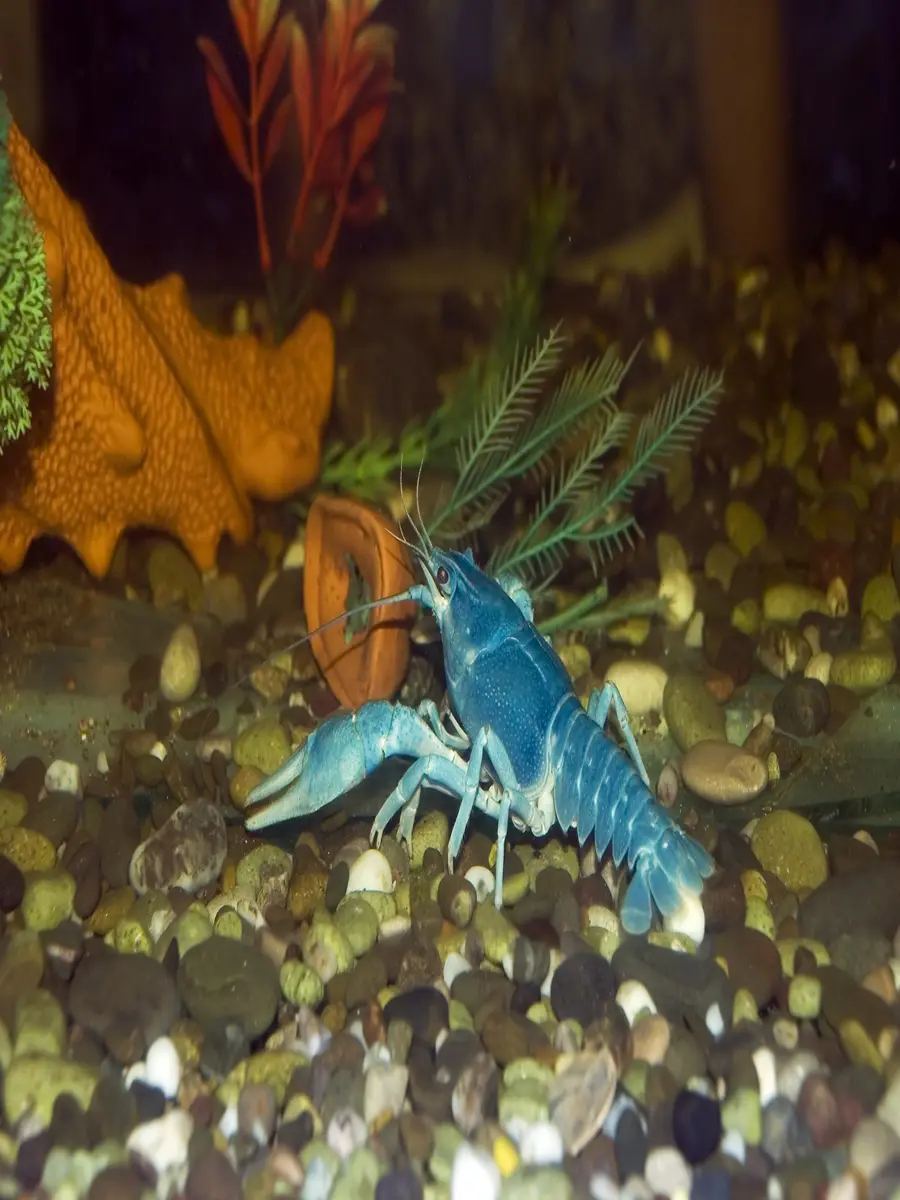
The most varied feature of the Blue Crayfish is its fiery blue exoskeleton, which can vary in shade from deep sapphire to light azure. Grown-up blue crayfish usually grow to about 6 to 8 inches in length, though some can reach vastly larger sizes.
Blue Crayfish have large, vigorous claws that are used for supervising, apprehending prey, and operating objects in their surroundings. Like other crayfish, they suffer molting, a process in which it sheds its exoskeleton to grow. This is a prone time for the crayfish, as its new hulls are initially soft. They are commonly solitary creatures. They are sectional and often hostile towards other crayfish, especially when resources like food or shelter are limited. They are omnivorous and self-seeking feeders.
During the nurturing season, males become more active and may engage in ruthless displays or physical conflict to entice females. They are known to create and defend enclaves, often residing in burrows or rifts under rocks or logs.
Diet Of Blue Crayfish
Blue Crayfish is an omnivorous and cunning feeder, meaning it consumes a wide variety of foods available in its surroundings. A significant segment of Blue Crayfish's diet consists of detritus, which is decomposing natural matter.
Debris provides essential nutrients and helps maintain the crayfish's energy levels. Blue Crayfish ingests a variety of marine plants and algae. They also eat decaying plant matter, which is easier to swallow and digest. They are also vultures, sustain small invertebrates such as insects, snails, worms, and other cockles. These protein-rich foods are important for their growth and progress, especially during the molting process. Blue crayfish are frequently fed merchantile pellets or flakes designed for omnivorous marine species.
Blue Crayfish's diet is diverse, encircling detritus, plant material and small invertebrates. Their opportunistic feeding habits make them flexible to various environments, safeguarding they can find livelihood in a scope of conditions.
Gender Differences Of Blue Crayfish
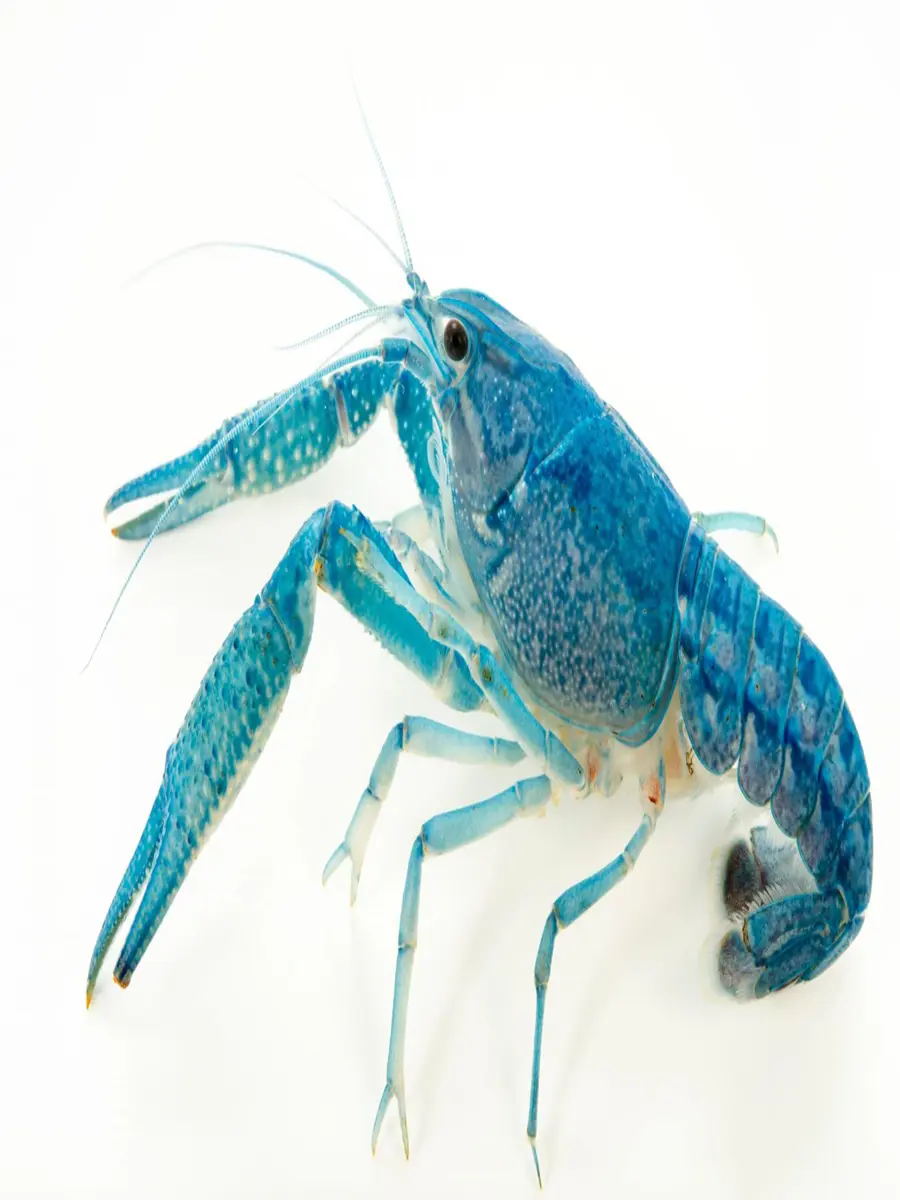
Blue Crayfish flaunts some gender distinctions that can help differentiate males from females. These variances are initially related to physical features and propagative anatomy.
Male blue crayfish are oftentimes somewhat larger and more muscular than females, especially in the claws. Their claws tend to be larger and more noticeable, giving them a bulkier demeanor. Females are usually smaller and more fragile compared to males, with commensurate smaller claws. This contrast is subtle but can be conspicuous upon close exploration.
Males have a specialized reproductive accessory called gonopods, located near the base of their walking legs. These gonopods are altered appendages used to transfer sperm to the female during mating. Females lack these hardened gonopods. Instead, their swimmerets are all soft and flexible, which they use to carry and protect fertilized eggs under their abdomen until they hatch.
Breeding Blue Crayfish
Rearing blue crayfish can be a rewarding comprehension, whether in an aquarium or a controlled aquaculture setting. With the right conditions, Blue Crayfish can breed strongly in confinement, providing an engrossing insight into the life cycle of these unique and colorful creatures.
Use a commodious tank, ideally 20 gallons or more, to harmonize the crayfish and their babies. Provide plenty of hiding spots and give the female a place to protect her eggs. Maintain clean, well-oxygenated water at a convenient atmospheric pressure. Feed the crayfish a balanced diet rich in protein, including commercial pellets, fresh vegetables, and infrequent live or frozen foods.
Initiate a mature male and female into the breeding tank. Males are usually ready to reproduce at around 6 months old, and females at a similar age. Remark the crayfish closely, as males can be aggressive. If they become excessive, separate them and reintroduce them later. The male will reach the female and use his claws to flip her onto her back and uses his gonopods to transfer sperm to the female's genital pores.
After mating, the pair may separate, and the female will start preparing to carry her eggs.
Care For Blue Crayfish
Caring for Blue Crayfish required a well-maintained environment, a balanced diet, and observation to their unique needs. Proper care for Blue Crayfish involves creating a well-preserved, spacious environment with clean water, a balanced diet, and plenty of hiding places.
Blue Crayfish requires ample space, so a tank of at least 20 gallons is endorsed by one adult. Maintain clean, well-filtered water at a suitable temperature by using a reliable heater and thermometer to monitor and regulate the temperature. Changing water weekly will help keep the water clear, but it should not create strong currents, as crayfish choose calmer water.
Use a base of sand or smooth gravel, which allows the crayfish to dig and burrow normally. Provide plenty of hiding spots using rocks and dense aquatic plants. Average lighting is sufficient for Blue Crayfish. They do not require intense light, as they are primarily nocturnal and will be more active during the night.
Feed them once a day, as overfeeding can lead to poor water quality and health issues.
Common Health Issues In Blue Crayfish
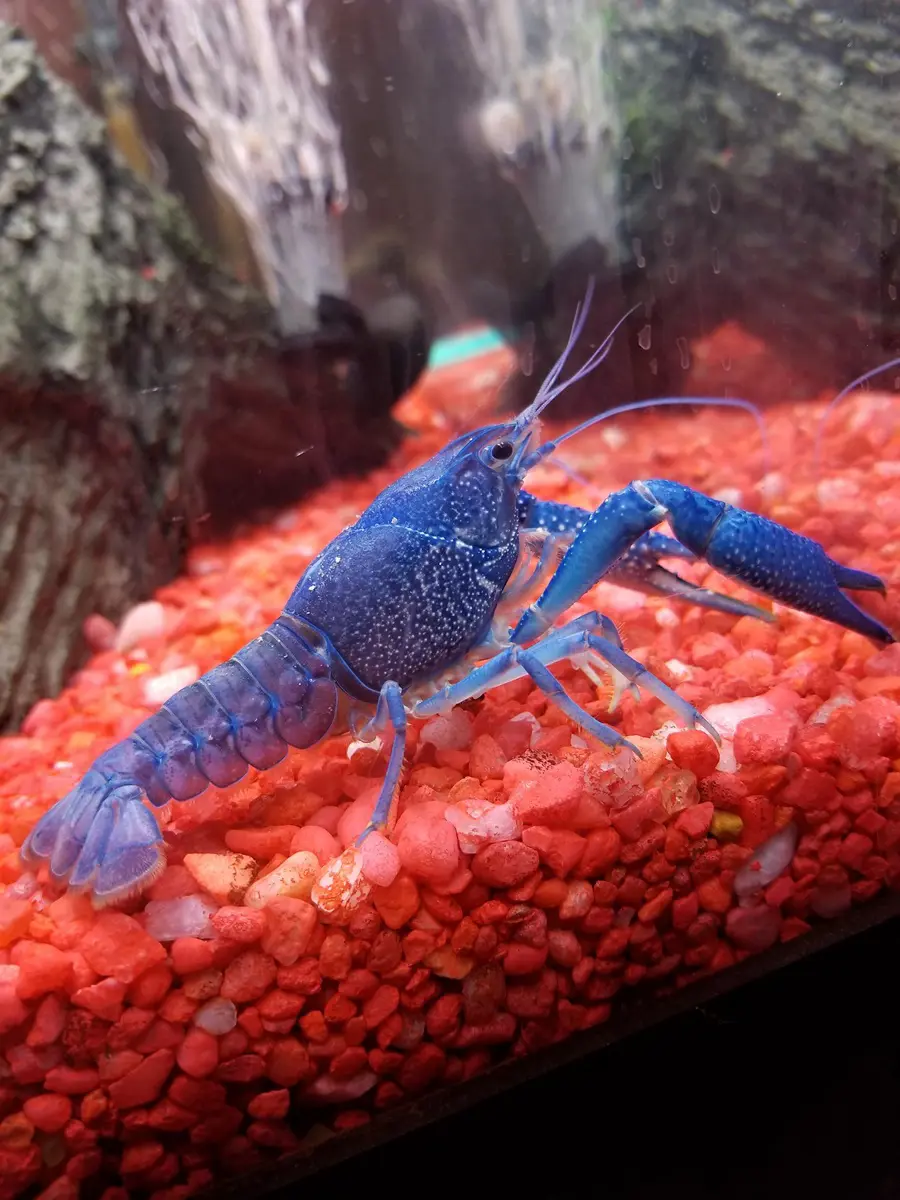
Blue Crayfish are commonly hardy creatures, but like any aquatic species, they can be sensitive to various health issues, especially if their environment or care is not ideal. If health issues arise, early interference and relevant treatment are essential to ensure the well-being of your crayfish.
Shell Rot
Shell rot is an ordinary and serious state in crayfish, represented by bacterial or fungal infections that affect the exoskeleton. The condition demonstrates stain patches, pitting, or even holes in the shell, usually starting as small spots that slowly worsen if left untreated.
Shell rot usually occurs due to poor water quality, which creates a surrounding where harmful bacteria and fungi can thrive.To prevent shell rot, it’s essential to maintain clean, well-filtered water and provide a balanced diet rich in calcium, and remove any sharp objects from the tank.
Parasitic Infection
Parasitic infestations in crayfish, especially those caused by crayfish plague, can be destructive and often lethal. The crayfish plague is a water mold that infects crayfish, leading to serious health issues.
It is highly infectious and can spread quickly through water, making it a momentous threat in aquariums. Tragically, there is no effective treatment for the crayfish plague, making early discovery and preventive measures critical in managing this severe parasitic infection.
Fungal Infection
Fungal inflammation in crayfish is described by the appearance of white, cotton-like growths on the shell, gills, or legs. These infections are usually caused by waterborne fungi, which thrive in conditions of poor water quality, stress, or injury.
This contamination often starts as small, isolated spots but can quickly spread if not imprinted. Regular observation and maintaining optimal tank conditions can help prevent fungal infestation from happening.
Nutritional Deficiencies
Nutritional insufficiency, especially in calcium, can seriously impact the health of blue crayfish, leading to issues with molting and shell development. Crayfish constantly molt to grow, shedding their old exoskeleton and creating a new one.
Without sufficient calcium, the new shell may not harden properly, resulting in a soft or deformed exoskeleton. Regularly monitoring the crayfish's diet and ensuring access to these fundamental nutrients will help support healthy shell development and successful molting.
Stress Related Issues
Strain is a consequential element in the health of blue crayfish. Causes of tensity include poor water quality, overcrowding, aggressive tank mates, and insufficient thrashing space.
Stress can undermine a crayfish's resistant system, making it more in danger of illness and infections. Indications of stress in blue crayfish may include bringing down activity, loss of hunger, and increased hostality. To lower stress, it is essential to preserve firm waterstate, provide plenty of hiding spots, and evade housing crayfish with conflicting species.
Environmental Conditions and Water Quality Issues
Poor water standards are one of the foremost causes of health complications in blue crayfish. High levels of ammonia, nitrite, and nitrate can be toxic, paramount to a span of matter from stress to death.
Blue crayfish is essential for clean, well-oxygenated water with a pH between 6.5 and 8.0 and a temperature range of 65-75°F. Systematic water changes, proper purification, and observation of water requirements are pivotal for intercepting health problems connected with poor water quality.
Blue crayfish are partially hardy but still require proper care and attention to advance. Common health issues such as shell diseases, parasitic infections, nutritional deficiencies, stress, and environmental problems can all be diminished through cautious survelliance, a balanced diet, and maintaining leading water conditions. By understanding these common health concerns, aquarists can provide a healthy environment for their blue crayfish, safeguarding their long and vibrant lives.
Tankmates Of Blue Crayfish
Select convenient tank mates for Blue Crayfish, essentially careful deliberation of their territorial and sometimes aggressive nature. While blue crayfish can coexist with certain species, it’s essential to select tank mates that can tolerate their behaviors and share similar natural element necessity.
Danios
Danios and exceptionally zebra danios frequently examine suitable tankmates for blue crayfish due to their speedy-swimming essence and their leaning to settle the middle to upper levels of the tank. The speed of zebra danios makes it demanding for crayfish to catch them, bringing down the risk of predation.
Zebra danios commonly swim in the middle to upper regions of the tank. This manner naturally keeps them aside from the bottom-dwelling blue crayfish. Protecting zebra danios in groups of at least six can enhance this safeguarding attitude, as they will shaft around together.
Tetras
Tetras, such as neon tetras and ember tetras, can undoubtedly be good tankmates for blue crayfish due to their small size, grouping demeanor, and deftness. Nevertheless, it is foremost to contemplate a few components to assure a pleasant harmony in the tank.
Tetra fish thrive in groups. The occupancy of a group also makes it more demanding for the crayfish to mark any one fish, lessening the chances of an charge. Their capacity to shaft swiftly away from prospective warnings makes them less sensitive to predation by blue crayfish, which are not distinctly fast-moving.
Rasbora
Harlequin rasboras and other related breeds are also good options because of their small size and instructing behavior, which helps them ignore the crayfish. A calm and well-modified group of rasboras are more likely to stay in their desired areas of the tank and avoid crayfish.
Whereas rasboras are small, their pace and leaning to stay out of the crayfish’s reach make them less vulnerable.
Top Lists

